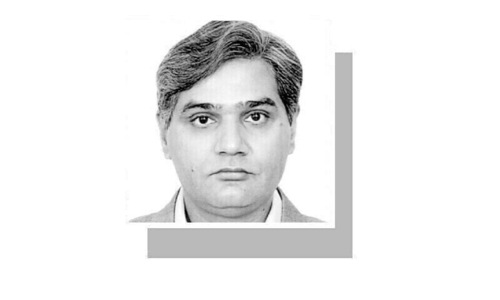India, China agree to restore tranquillity on border

NEW DELHI: Two days after deadly hand-to-hand clashes left 20 Indian soldiers dead on the Sino-Indian boundary in Ladakh, their foreign ministers spoke on the phone on Wednesday and agreed to abide by existing bilateral agreements to ensure peace and tranquillity on their disputed Himalayan border.
Indian analysts were divided on the next steps, but there are less strident voices that want New Delhi to refrain from joining a US-led anti-China bloc, not least because agreements with China were predicated on a presumption of neutrality.
According to the Indian side, External Affairs Minister S. Jaishankar and Chinese Foreign Minister Wang Yi “agreed that the overall situation would be handled in a responsible manner, and both sides would implement the disengagement understanding of 6 June sincerely.”
The Indian statement further said that neither side would take any action to escalate matters and instead, ensure peace and tranquillity as per bilateral agreements and protocols.
A summary of the conversation from the Chinese side said the phone call would help ease the situation. “While they expressed their stance, they also set the tone for easing the situation, which will direct public opinion in their own countries,” a paper linked to China’s ruling Communist party said.
The two countries’ foreign ministers hold talks
The paper added some terse comments, however, as did the Indian statement. “The Indian side especially must fulfill its promise and implement the consensus reached between the two countries. The border issue is the most sensitive part of China-India relations. Only when it is eased can the two engage in cooperation in a composed manner,” the Global Times said.
“The latest clash at Galwan Valley is regrettable,” the Chinese newspaper said. “How to avoid the repeated occurrence of such conflicts and prevent the situation from escalating has become the biggest test to China-India relations.”
It quoted Mr Wang as alleging that it was the Indian side that intentionally provoked and started the violent attack. “It is hoped that India does not indulge in its sentiment, but understands the stance of the Chinese side.”
The Global Times cited existing agreements and mechanisms to keep the borders peaceful. “Resorting to this mechanism and improving on it rather than destroying it is the only way out for the two to address frictions. The Indian side should never think about pushing China to make concessions, because China won’t. Moreover, China’s countermeasures will never be late no matter the cost.”
(According to AFP, the Chinese foreign ministry said that Wang demanded “India conduct a thorough investigation” and punish those responsible for the clash. “The Indian side must not misjudge the current situation, and must not underestimate China’s firm will to safeguard its territorial sovereignty,” it added.)
Mr Jaishankar, on his part, conveyed India’s protests “in the strongest terms on the violent face-off in the Galwan Valley on June 15”.
Mr Jaishankar reminded Mr Wang that a meeting of senior military commanders of June 6 had agreed on measures to disengage and de-escalate.
“While there was some progress, the Chinese side sought to erect a structure in Galwan valley on our side of the LAC. While this became a source of dispute, the Chinese side took premeditated and planned action that was directly responsible for the resulting violence and casualties,” Mr Jaishankar said.
“It reflected an intent to change the facts on ground in violation of all our agreements to not change the status quo.”
The phone call took place as Indian Prime Minister Narendra Modi reacted for the first time to the deadly combat in which no bullet was fired. Mr Modi’s office said he had called an all-parties meeting on Friday to discuss the future steps. Reports quoted him as saying the soldiers’ deaths would not go in vain.
The Congress party and several other groups have asked Mr Modi to brief the country about how things were allowed to deteriorate to the point that it permitted the most vicious clashes to take place between the two militaries in 45 years, leading to the death of at least 20 Indian soldiers.
Former national security adviser M.K. Narayanan, considered close to the Congress party, offered some clues in a write-up, which could influence the thinking within the leading opposition group, the foremost being concerns over India’s growing proximity with the US-led anti-China alliance.
“This is not the time for India to be seen as the front end of a belligerent coalition of forces seeking to put China in its place — even the North Atlantic Treaty Organisation, or Nato, now seems to be joining the anti-China bandwagon under prodding from the US,” Mr Narayanan observed.
“India has consistently followed a different policy in the past, and it is advisable that it remains truly non-aligned and not become part of any coalition that would not be in India’s long-term interest.”
Published in Dawn, June 18th, 2020













































